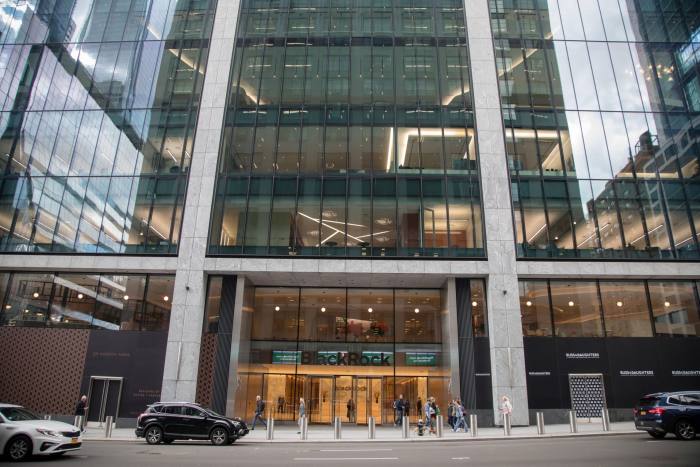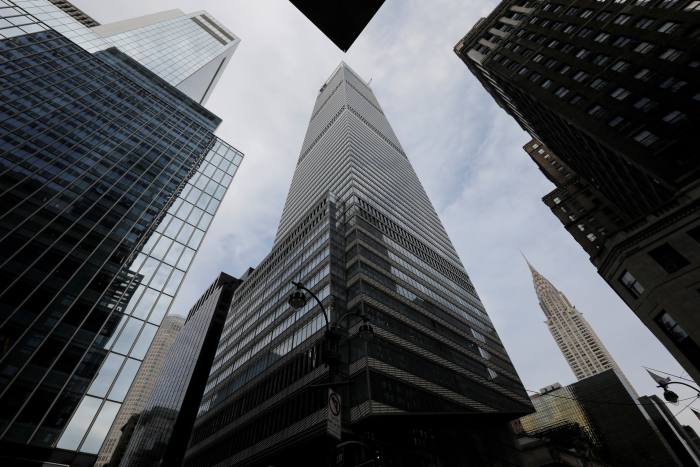The view from the observatory over Manhattan’s Hudson Yards was clouded on a recent afternoon by smoke from distant wildfires in Canada. But that hasn’t dimmed Jeff Blau’s views for the expansive developments or high-end offices that he specializes in.
At a time when offices are dragging the commercial real estate sector into crisis, Blau, chief executive of Related, one of the largest US developers, plans to build 10 new towers in cities across the US and in London, an investment that will total an estimated $6.5 billion.
The idea was not an easy sell to investors just now, admitted Blau. The remote work trend accelerated by the Covid pandemic has slashed office attendance and boosted job vacancies. A record 70.3 million square feet of available space sat in the Manhattan office market at the end of the second quarter, according to Savills. Investors and lenders are becoming desperate to reduce their office exposure.
Even so, Blau believes there is a shortage of the most modern and lavishly equipped offices—buildings that he now refers to as “double-A offices” or “lifestyle offices.” That confidence arose from a Hudson Yards performance on Manhattan’s west side.
“We’ve had some of our best leases over the last 12 months amidst this period of time when everyone is saying ‘the office is dead’ – except it’s not,” said Blau, noting that Related secured a lease on the top floor of his newest tower, 50 Hudson Yards. , over $200 per square foot. That’s more than double the $95.53 average asking rent for grade A buildings in Midtown, according to Savills.
For the upcoming tower, Related is targeting Austin, Miami, West Palm Beach, Santa Clara, Boston, Chicago, Detroit and Brent Cross in London. The projects are in various stages of development. The most advanced, in West Palm Beach, is under construction and offers signed leases.

BlackRock headquarters at 50 Hudson Yards, where the rent on the top floor is more than double the average rent for a class A building in Midtown © Michael Nagle/Bloomberg
His confidence in the office is such that Related is also planning to build a 2 million square foot office tower on the undeveloped west side of Hudson Yards. The site will also host a casino if a joint bid with Wynn Resorts is selected for one of three upcoming New York licenses.
“Every landlord thinks they own an A building, right? But some of these A buildings are 50 years old. And even though they have been well maintained over that time period, they are not the same as new buildings,” said Blau. “These buildings are completely different in every way.”
Those at Hudson Yards boast state-of-the-art air filtration and energy efficiency, and spacious floor plates that can accommodate an entire company on one floor. Their ever-improving facilities range from a private cafeteria overseen by a celebrity chef to a concierge medical clinic and, most recently, a helicopter shuttle service to the local airport.
The combined effect, according to Blau, is an environment that draws employees back to the office—something certain companies will pay dearly for.
“I don’t care what industry they’re in — every CEO wants their employees back in the office five days a week. He may not say that because he is afraid that his employees will quit or that he will not be able to attract employees. But if you ask them, is that a better way to run their business — is it more productive, is it more innovative? They would say ‘yes,’” he argued. “Once it becomes about attracting and retaining employee talent, then rent becomes irrelevant.”
According to Related, occupancy among Hudson Yards’ tenants now averages over 80 percent Monday through Thursday. (“Friday,” said Blau, “has turned into a national holiday.”) That compares to less than 50 percent citywide.
It’s unclear whether employees are responding to Hudson Yards’ glitzy office carrots or boss sticks like BlackRock chief executive Larry Fink, who recently ordered his workers to return to their desks four days a week.
Either way, Related received further validation recently when Brad Lander, New York City comptroller and once Hudson Yards skeptic, noted that the development is now generating $200 million more in annual tax revenue than expected — and growing. “So this is one place I have to say I was wrong,” Lander told Errol Louis at Inside City Hall program. (As for the architecture – slammed by many critics as soulless – there are still “a few questions,” notes Lander).
Other developers are also betting on super office. SL Green has had similar success at One Vanderbilt, near Grand Central Station, with some rents as high as $300 per square foot. Hines, his partner in the venture, also believes there is a shortage of high-quality office space. RXR, meanwhile, will soon be merged with 175 Park Avenue.

At One Vanderbilt, near Grand Central Station, several offices are rented for $300 per square foot © Reuters
“Each market may only be able to support one or two of them,” said Blau. “But that’s our business. That’s what we focused on.”
Blau, 55, was handpicked by Related founder Steven Ross while still a student at their alma mater, the University of Michigan. He joined the company amidst the commercial real estate crisis of the early 1990s. This time around, he observed, many properties were performing well — they were too leveraged at a time when interest rates were rising.
“Anyone with too much debt is struggling right now. That’s one of the lessons – don’t owe your build too much,” says Blau. “Nearly all of this is interest rate driven, overall. And then we have this old office segment [buildings] That [are] struggling on the property level.” It helps that Related is privately owned, and so, unlike some publicly traded competitors, it’s not under pressure to flag its buildings to market.
Blau was one of Ross’ top lieutenants at the Time Warner Center—now the Deutsche Bank Center—at Columbus Circle. This confirms Related’s evolution from an affordable housing specialist to a mixed-use project developer that blends retail with luxury condos and offices.
Hudson Yards, North America’s largest development, features the same elements on a much larger scale. It was also a daunting engineering challenge due to its location above a working rail yard. Related was selected from a pool of bidders in 2008 after the financial crisis prompted other developers to pull out.
The original plan was for the Hudson Yards office tower to play a supporting role by attracting the wealthy to its retail space and condominium towers. In the event, they have become the star players. Three towers — 10, 30, and 55 Hudson Yards — are now 100 percent leased. Some early tenants, such as Tapestry and BlackRock, were coaxed from Midtown with lucrative deals, according to leasing experts. The fourth tower, 50 Hudson Yards, is nearly 90 percent leased.
Instead, shopping mall tenant Neiman Marcus was driven into bankruptcy in 2020 by the Covid pandemic, leaving three floors vacant. “Demand for offices has been so strong that we are converting the space—instead of retail—back to offices,” says Blau.
Another thing that didn’t quite go according to plan: the statue of the spiral vessel staircase in the middle of Hudson Yards. Ross saw it as an iconic work of public art. Instead, it has been featured in several suicides and closed to visitors for nearly two years as a test-related safety net.
As Related focuses on new construction, other developers are planning different paths through the office crunch. Some spend a lot of money to upgrade old buildings. Others are trying to convert it to residential use. Blau saw possibilities in both but wasn’t a big fan of either approach.
He applauds the renovation of PENN 1 Vornado, the 1970s tower at Pennsylvania Station, for example, but expects the upper limit on the lease to be limited. Regarding conversion, office towers were simply not designed for residential use, he said, making them expensive to reuse. Adding to the cost is the need to empty it first.
“They often don’t achieve a zero percent occupancy rate. They go like 70, 60, 30 – and then 30 never wants to go. And then you have to spend so much money to convert it that it’s basically the cost of putting up a new building,” said Blau. “And if that’s true, you have to tear the building down and build a decent building.”
#Jeff #Blau #dismisses #dead #office #claims #betting #billions #tower